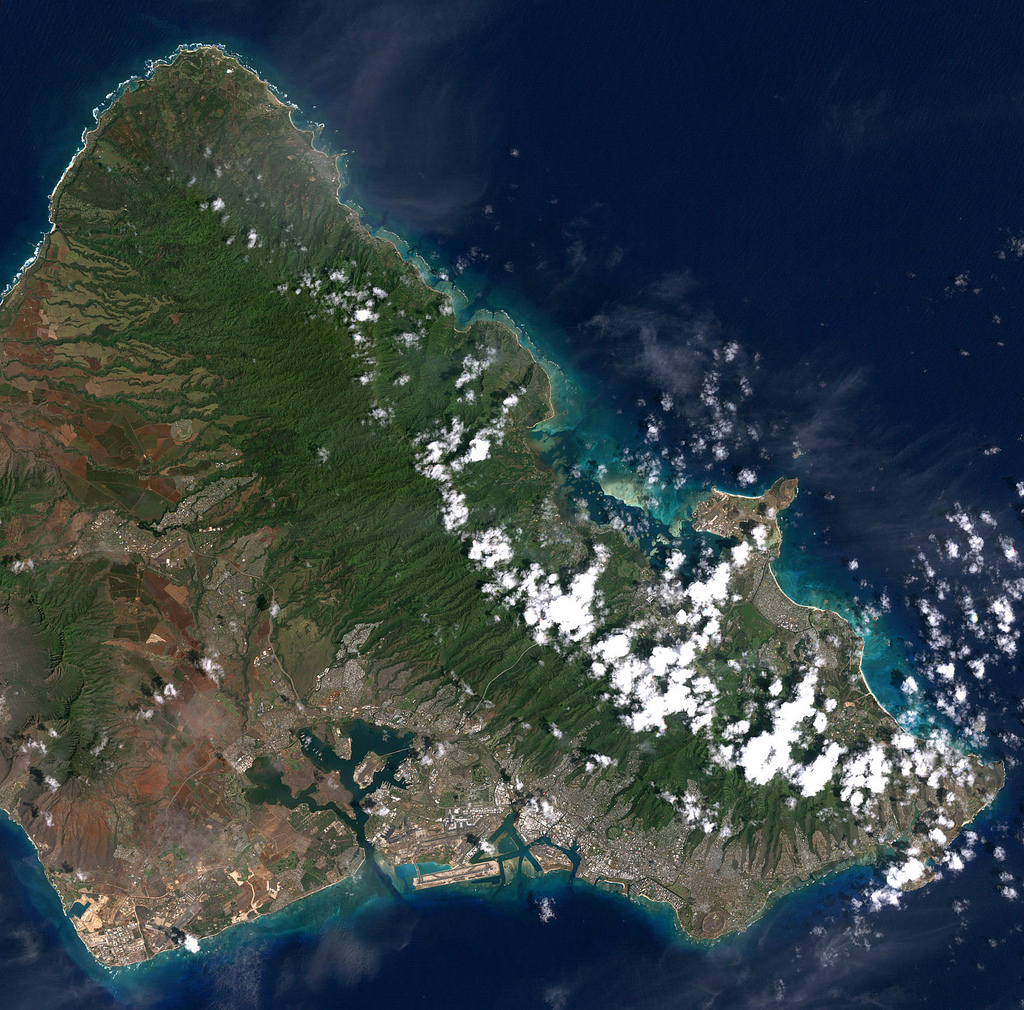
70 Years Later: Pearl Harbor

From NASA's Earth Observatory:
70 years ago today, Japan bombed the U.S. naval station at Pearl Harbor, the event which finally drew the United States into World War II. Pearl Harbor, which still serves as a Navy base, can be seen on the bottom left-hand site of the above image.
Honolulu is one of the most exotic resort destinations in the United States. Honolulu is located on Oahu, the most populated of the Hawaiian Islands. Just to the East of Honolulu is Waikiki Beach, with throngs of tourists and dozens of high-rise hotels. Overlooking Waikiki is Diamond Head, a volcanic crater formed from 70,000 to 500,000 years ago, long after Oahu’s principle volcanoes—Ko'olau and Wai'anae—stopped erupting. North of Diamond Head are the eroded remains of Ko'olau. The clouds in the upper right hand corner of this image are an almost permanent feature of Oahu. Trade winds blowing from the northeast are stopped by the 3,000 foot (960 meter) high mountain range, where they rain out most of their moisture. As a result, the windward side of Oahu is usually cloudy, and the leeward side is relatively clear and dry.
The image was captured by the Landsat 7 satellite’s Enhanced Thematic Mapper plus (ETM+) instrument on March 18, 2001.
Get the world’s most fascinating discoveries delivered straight to your inbox.
 Live Science Plus
Live Science Plus






